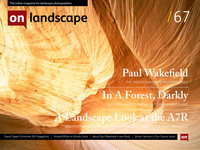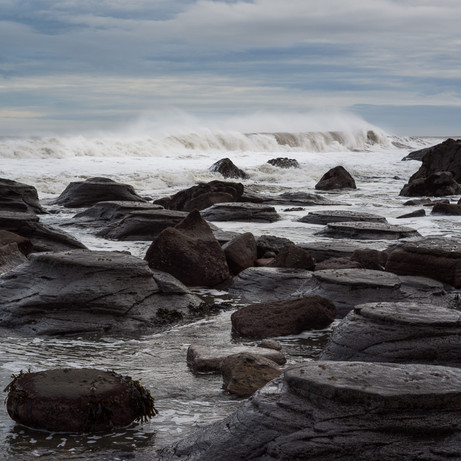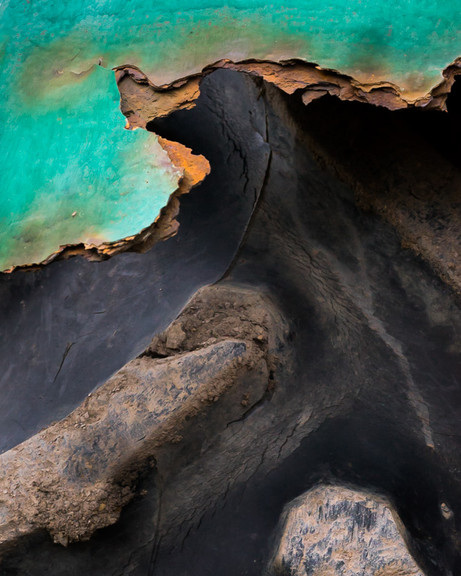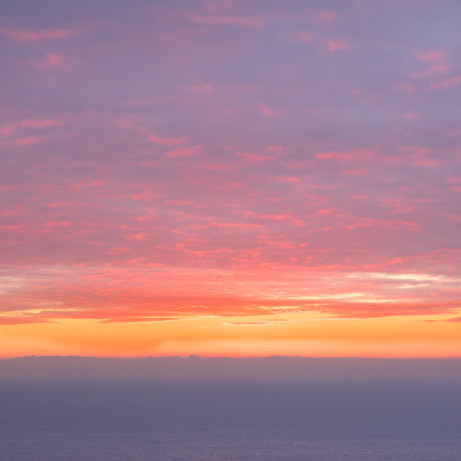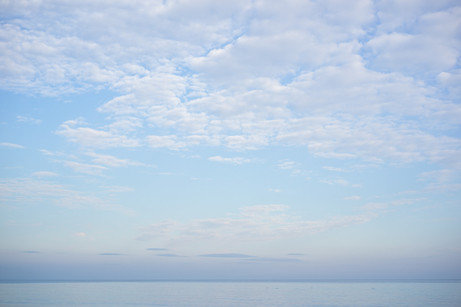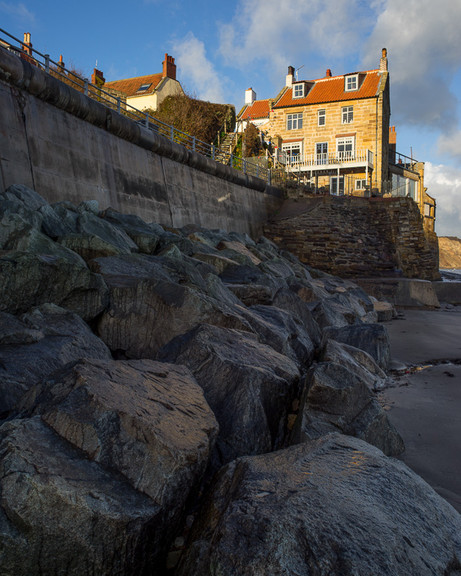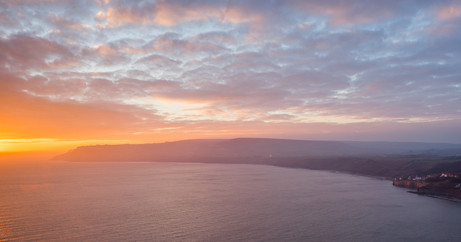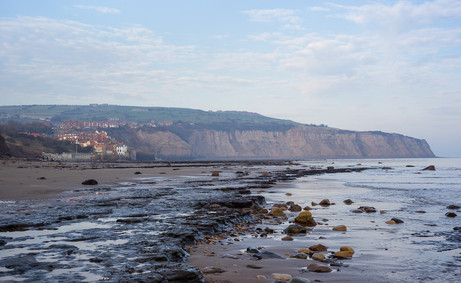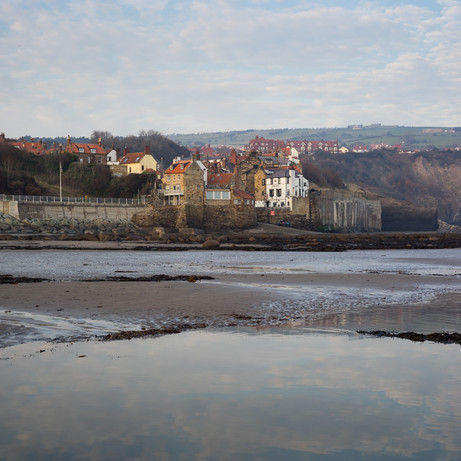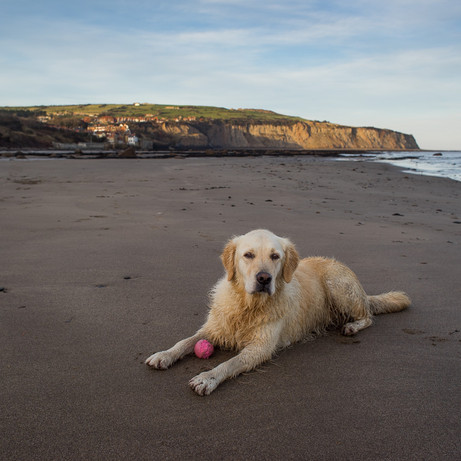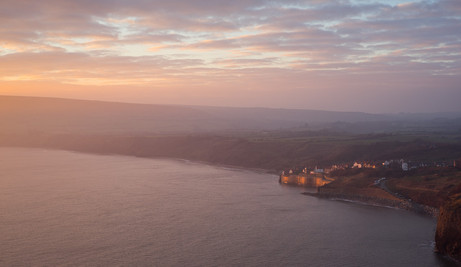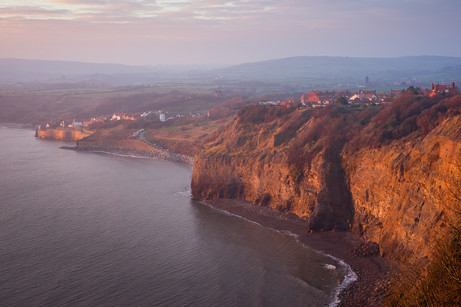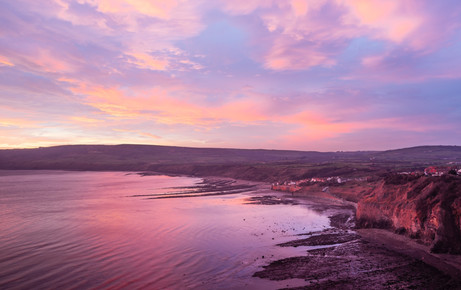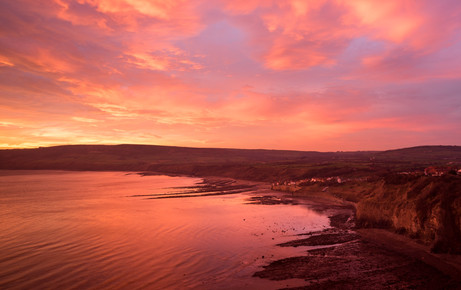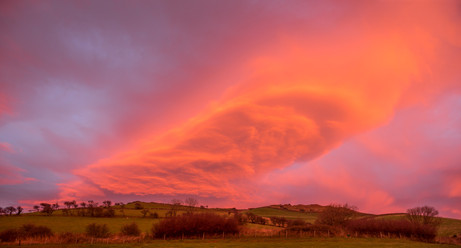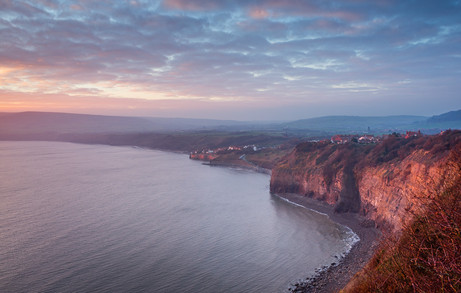A first look at the Sony A7R
Sony A7R – Short Term Field Review
Like all of us who shoot colour 5x4, it has become very likely that film or processing will disappear over the next few years or become prohibitively expensive. I have been looking at the options since the D800 and although many of my friends have moved in this direction I didn’t get on with the camera for a variety of reasons despite being a Nikon man for 30 years. The main reason was the colour rendering from the camera particularly around dawn and dusk where the blue response was not to my taste and very hard to correct.
On the scene comes the Sony A7R... The A900 has a superb reputation for colour integrity and this has largely been carried through into the Nex line. I had high hopes for the A7 and A7R incarnations.
With a combination of a cashback and 0% finance offer from Sony, I found myself unable to resist trying the new A7R. I had been anticipating a move to mirrorless full frame or next generation APS-C for a few months and had rotated out some old stuff (and the Fuji kit ) and exchanged for 35mm F2 aspherical summicron, a 50mm summicron of 1983 vintage and an 85mm Tele Tessar in ZM from Zeiss. All worked very well on Nex 6 and 5n but less well for the 35mm on the Nex 7. Early reports had suggested a few problems with rangefinder glass longer than 35mm so I thought I was set fair for a good optical experience.
A7R duly arrived and this report is my first 2 weeks use with a variety of glass – none of it in native ‘E’ mount !
Initial Impressions
It is a modern camera from a top manufacturer and evolutionary from the NEX line-up. It is well made and the technical reviews you can find online bear out when you have the camera in hand.
Stand-out things I have noticed in the first 2 weeks of use:
- Moving the ‘menu’ button to the top left of the camera is counterintuitive for me – it now means that I have to use two hands to access the menu system rather than one. Although you can set many things on the customisable buttons some things are still only in menus (e.g. Format). Maybe I’ll figure it out eventually. The one(right) hand ‘finger & thumb’ operation has become ubiquitous on gadgets and certainly, the NEX series are operated that way to very good effect.
- Hoorah !!! the camera accepts a remote cord through the USB output, its self powered from the camera too so no extra batteries. The downside is that it is on the side that the ‘L’ bracket will likely go so will always be inside the tripod head clamp if used in portrait mode.
- Battery life – wow – not used to having to worry about carrying a spare even for a casual outing. I am not sure that the battery would last a heavy days use in the cold, it goes down remarkably quickly. Makes the decision not to include an external charger all the more surprising. I had spares from my other Nex cameras (same battery) but it would be a mandatory purchase if bought as a first ‘e’ mount camera.
- The EVF is magic. I have forgotten that I am using an EVF, as a die hard optical man I am quite surprised how easily I have written it off. Use of the levels and histograms with real time DOF preview makes getting it right straightforward. A 2 press button sequence brings up the magnified spot for manual focusing which is also excellent and a single press of the shutter button gets rid of it. It has become intuitive in a very short space of time. This is the best EVF I have used, not perfect – it still shimmers and gets grainy when stopped down in poor light – but very usable. Better than that found in the Nex 6 and 7 and Fuji X series – it seems cleaner and clearer somehow. Manual Focus has been difficult on SLRs for a few years since AF was introduced and screens became progressively more tuned to it but because of the simplicity and accuracy of the MF technique on the A7R through the EVF this is now a non issue. Dare I say as good as a split image screen from a good manual SLR. It has become second nature working the Manual Focus+ button, zoom in, focus, stop down, check and shoot. I personally don’t use peaking as it sprinkles sparklies all over the image for edges in focus. My eyes are no longer good enough to focus without aids or autofocus so the quality and usability really makes a difference.
- Early indications are that the camera consistently underexposes images in bright light, I reckon nearly 1 stop. I need to do more work on this but it surprises me that all my image adjustments in LightRoom start with winding up the exposure, not normally the case with the other Nex cameras, the Nikons or the Fuji X series I have had experience with.
- The camera and adapted lens fits in the top pocket of a Paramo jacket. This means that I can pack the camera without a bag. I hadn’t anticipated that I would be able to do this so very pleased. Unfortunately the SD card hinged door is on the back of the hand grip so I have accidentally popped it open in transferring the camera too many times already. It is also not the best engineered part on the camera so I fear it may become detached at some point.
- I have been shooting RAW and processing with Lightroom 5.3 Release Candidate and there is nothing out of the ordinary so far. Sharpening is different to other NEX cameras probably due to the lack of AA filter. The Highlight and Shadow sliders seem to have a more subtle effect than I am used to seeing really only kicking in above 50%.
No major issues here then and on to field testing the IQ.
Comparison to NEX Lineage
In terms of comparison to the NEX cameras, little to say – the genetic heritage can be felt in the ergonomics and build but the menu layout is different and buttons have been moved around – playback and menu being the most significant ones for me as previously mentioned.
- The on/off switch has been reversed from all the other NEX cameras which affects usage when switching between cameras (why... ? ).
- The rear screen is new, bigger, brighter and much better.
- I am not going to talk about the ‘hump’, like it or hate it compared to the NEX it works well. It gives me a better hand position for manual lenses where you can fit the camera in the palm of the left hand and operate the aperture and focus with the fingers of the same hand in a very traditional way. Ergonomics are subtley different with the EVF on the left hand side and depends on what you are used to which feels better. I was enjoying not squashing my nose into the rear screen.
Image Quality
The first shock was that the 35mm Aspherical Summicron did not perform at a level that justified its price point, below F8 was soft from about 30% into the frame and the magenta cast affected the sides and corners. It was just beginning to be Ok at F11. Subsequent tests published on the internet supported what I had found so I didn’t consider it to be sample variation. This gave me a major headache as you cant buy a 35mm Zeiss lens designed for the camera for love or money in the UK, no delivery dates until in the New Year. This was going to be my 90% used focal length so compromises to this extent here are not good – especially after using the Fuji 35mm which is outstanding and cheap . As it happens I had a 28mm F2 Canon FD lens from my Father and have found this to be an OK substitute, not as good in the centre as the Summicron but a better average over the frame – vignettes but no colour shift. Even the 50mm Summicron has some slight smearing all the way down to F8 and quite bad vignetting at F2. The 85mm Tele Tessar was faultless from F4 (its maximum aperture) onwards right across the frame.
Other than that the camera can resolve an astonishing amount of detail and is as good as anything I have used and likely beats my home scanned 5x4. Its not all a bed of roses though.
The resolution is such that it clinically shows up any deficiencies in your imaging chain. Depth of field (or lack of) is seen really easily, sharpness fall off across the frame leaps out at you so any poor lens quality control will be noticed (its surprising how many lenses are decentred straight from the factory, the tolerances for AF lenses are just too loose). A quick glance at hyperfocal tables will give you an indication of the issues that will be faced if you need front to back sharpness. There are no Tilt/Shift lenses available un-adapted for the ‘e’ mount and modern Nikon, Canon and Samyang versions are all quite significant in size. There is a Canon FD 35mm Tilt Shift lens from the 80’s but it is rare and expensive second hand, all other lenses of that vintage are shift only. I haven’t seen any tests on how tilt will work with the A7 sensors but I would not be surprised if it introduced a whole lot of issues because of the angle of incidence of light. I am keeping my powder dry on T/S at the moment..
The upside is that you can view Depth of Field easily with the A7R and that means you can adjust the focussing to get exactly what you want sharp (if its possible) by moving the magnified view around the critical parts of the image. Think Medium Format or Large Format discipline if you want to consistently get the best out of this camera.
I don’t think I have seen examples of ‘shutter shock’ in use, one image is a possible but the shutter speed was in the danger zone anyway. Either way it would nice if the self timer could be programmed to do the equivalent of mirror lock up and close the shutter at the start of the sequence thereby eliminating the problem completely. The A7R doesn't have an electronic first shutter and is theoretically at risk from this problem, the A7 has and is not at risk. Perhaps this is a consequence of the tie-up with Olympus where it is a hotly debated issue on the latest micro 4/3rds cameras.
The tractor image was the other big surprise. New camera syndrome meant that I spend the first part of a shoot at Port Mulgrave on Auto ISO with 1/60th as a minimum even on the tripod. The camera ratcheted the ISO up to 6400 and I didn’t notice until much later. Noise reduction applied in Adobe LightRoom was not much more than the default but I was able to get good colour, excellent dynamic range and fair sharpness from something I though must have been 400 or 800 ISO.
In summary, pretty damn happy – if I put the right glass on the front and use the right level of shot discipline then this camera will deliver.
Things to look into further are the claims for reversing some of the effects of diffraction at small apertures with the new Bionz processor but at this stage, I haven’t tested it and am unsure whether it needs to know the lens to work at all.
Colour Quality
This is a somewhat subjective area and has variables in what we individually like, what is real and how to objectively measure the differences so they can be corrected easily. Coming from film its slightly easier to relate to as you had a fixed White Balance and a specific spectral response from film types (like Velvia) that you got to know and was part of the choice made at the shutter pressing moment. Not so with digital, the realm of Auto WB and some variances in what ‘daylight’ means depending on how you process the raw information (in camera or software). Dawn and dusk I will typically use a ‘daylight’ white balance to most accurately represent the subtle blue and pink hues prevalent at this time. My Nikon cameras really struggled with this few moments of pre-dawn and tended to be over cyanic in the output in a way that was very hard to correct in post. Tim (and others) really like the Sony A900 as it handles this light very well. This isn’t a uniquely digital problem in that Velvia used to go completely AWOL on colour if you used it too early for dawn shoots.
Well, the good news is that the Sony A7R seems to do a good job on the blues, I have had one dawn out with the camera where I would have struggled to get what I wanted from the Nikon but the Sony did an OK job. Early days but looks promising.
In all other areas, the colour from the camera looks very good to my eye.
Lenses
Day one launch of the A7R gives a theoretical availability of one lens – the 35mm Sonnar from Zeiss. It has excellent reviews but I can't give you my own view of it because I can't get one and will not likely have one until the early part of the New Year. The current roadmap has an elephantine gestation period before fulfilment. Many will see the lack of dedicated lenses as a significant problem. System building has to be done via third party solutions at the moment which is a bit of a lottery in what works well and what doesn't. All is not lost.
Considering the price of the 35mm F2.8 sonnar for the ‘e’ mount is in excess of £600ukp – a good system can be built with manual focus glass from the 80s from Contax, Canon, Nikon or even pre 3 cam Leica R from £30ukp to £300ukp or new Voigtlander or... etc. I have been using some Canon FD glass in 28mm, 35mm and 50mm – the 28mm F2 is a lovely piece of glass, not perfect but has some character. More on this in another issue after some more extensive usage but be aware I had a poor experience with my first cheap adapter from Ebay which was out of alignment but the Novoflex one is perfect. The camera as previously stated has tight tolerances on the alignment akin to the challenges photographers had with the first medium format backs and needing dedicated shims etc. I have adapters from Kipon, Voigtlander and Novoflex in Leica M also and they are all different and with each lens so be prepared to shop around to find what suits. None to date really nail infinity focus at the same point as infinity on the lens and normally are a bit past it. The Kipon is pretty tight on infinity with the Leica lenses. Personally, I have reached a view that if I am going to have a long term solution with a lens mount then I would be best served with a major brand whether that be Kipon, Novoflex, Voigtlander or Metabones – Novoflex being the best of the four in my opinion.
Images
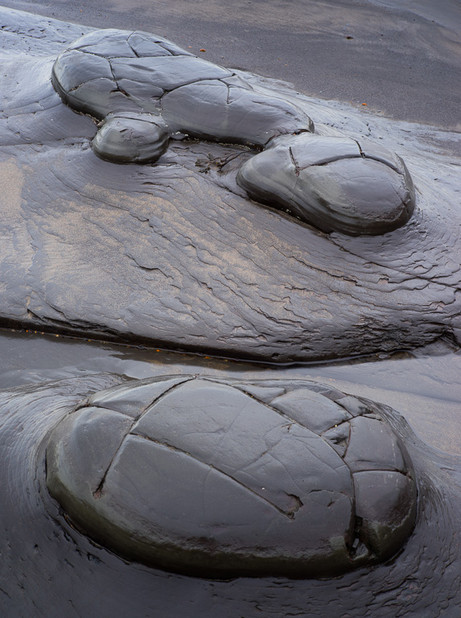
A trip to Port Mulgrave with Jon Brock. A favourite subject shot for the first time not on 5x4 or 10x8 ! 50mm Summicron
In Conclusion
If you step back from the hyperbole surrounding their launch and accept that this is just another camera, nevertheless for my photography step changes have occurred. For the first time in a camera with a pro spec sensor the lens choice has become independent, you can put just about anything on these cameras and combine the best of any lens world from the last 30 years with IQ up to now only the domain of Canon & Nikon flagship product lines. A return to the 19th Century when this was taken for granted! Manual focus with the EVF is the best experience I have had with a camera since owning manual focus SLRs in the 90’s. I couldn’t get on with manual focus in any DSLR as my eyesight deteriorated so without this it still wasn’t viable for me. It is a pleasure and actually feels more appropriate for the care you have to take to extract the image quality available.
I can put this camera in my pocket with a lens and get full frame 36 mp. Add a couple of other lenses in pockets, spare batteries (!) and a lightweight tripod and it replaces 5x4 for me. As someone with occasional back problems, this is a hugely significant step. I have almost stopped carrying my 5x4 or 10x8 around since having a really nasty scare on top of a waterfall with a back seizure from my pack in Scotland in January.
The A7R isn’t for everyone, I have gone down this route to provide a portable system with quality that can replace 5x4 for my needs. Hence using manual focus glass, adapters, a solid tripod and ‘L’ bracket is no hardship to extract the best quality I can from the camera and that looks more than good enough. It will not replace my NEX 6 as a pocket take everywhere utility camera where speed is of the essence and lapses in technique aren’t brutally punished. If you are likely to be less fussy on the glass you put on it and the technique deployed then this, like the NEX 7, are probably not for you.
Not really about the camera per se but it isn’t a cheap investment by any stretch of the imagination. My last worry is investing significant cash in Sony themselves. By their own admission, they enjoy chasing new ideas and bringing them to market but that isn’t wholly positive in my eyes if camera systems are fads that come and go every couple of years. Modern digital cameras rapidly lose value to almost junk status over a 3-5 year period anyway but systems should live much longer. Recent history doesn’t quell the concerns. The NEX 7 was so nearly perfect and needed minor updates to make it a winner but appears to have been dropped or at least it's priority in R & D put on the back burner, firmware updates are very limited (and largely only for lens compatibility) but new models are released with fixes instead (compare that to Fuji ). Good glass has been very slow to come in the ‘e’ mount and the focus has been on the consumer rather than pro-sumer or pro (again compare to Fuji and the XF series). Sony needs to do some work here as I would like to think that in 3 years time I can slip in a new Sony A7 body with upgraded technology and keep everything else, which has proven not to be the case with NEX. A pointer will be whether a firmware update comes fairly promptly to address some of the concerns around shutter shock and overly aggressive RAW compression both of which should be easily fixed with firmware.

